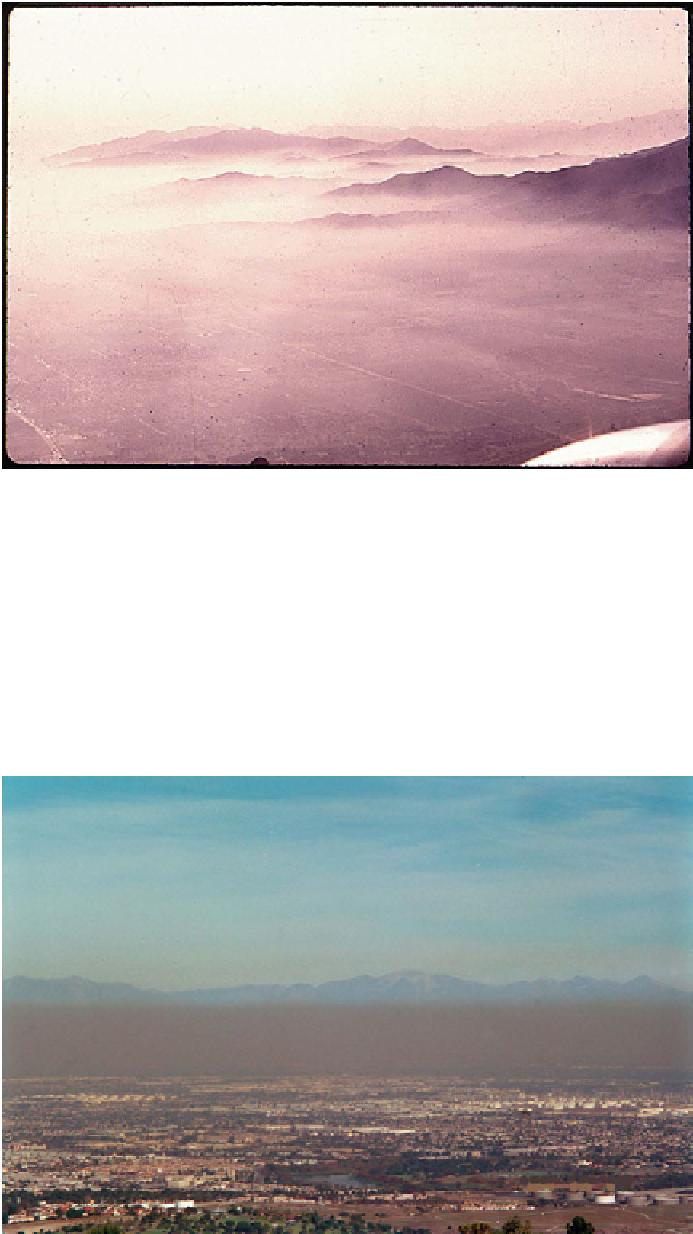Geoscience Reference
In-Depth Information
Figure 7.26.
Combined haze and fog over Los Angeles, near the San Gabriel Mountains, May 1972. Gene
Daniels, U.S. EPA, May 1972, Still Pictures Branch, U.S. National Archives.
air because these are the hours that NO
2
(g) mixing
ratios are highest. The second cause of reddish or brown
colors is preferential absorption of blue light by nitrated
aromatics, PAHs, and tar balls in aerosol particles.
Figure 7.10 shows that a variety of nitrated aromatic
compounds preferentially absorb not only UV, but
also short visible wavelengths. PAHs and tar balls are
also absorbers of short visible wavelengths. The blue
light absorption and brown transmission by these com-
pounds enhances the brownish color of smog. Third,
when soil dust concentrations are high, air can appear
red or brown because hematite in soil dust particles
Figure 7.27.
Reddish and brown colors in Los Angeles smog on December 19, 2000. Photo by Mark Z.
Jacobson.


Search WWH ::

Custom Search